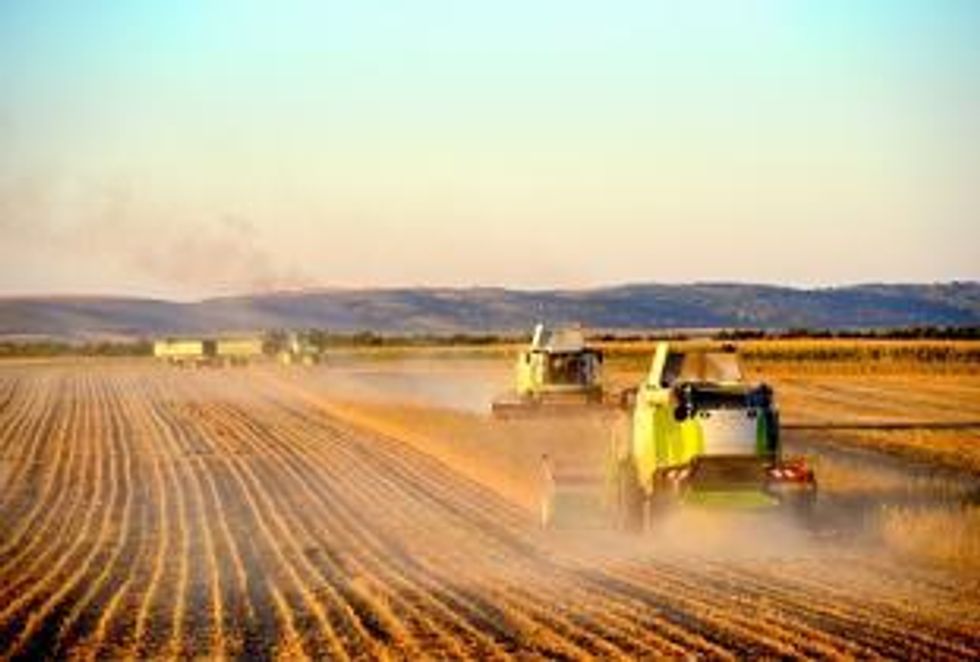Concerns about adverse weather in western Canada and Russia are sending grain futures on a rally. This is good news for diammonium phosphate and other phosphate based fertilizer prices.
By Leia Michele Toovey- Exclusive to Potash Investing News
Concerns about adverse weather in western Canada and Russia are sending grain futures on a rally. This is good news for diammonium phosphate and other phosphate based fertilizer prices. Since June, rising grain prices have propelled the price for the crop nutrient to new highs, with phosphate prices averaging $431 over the past quarter, 55 percent more than the previous year-on-year period. Diammonium phosphate, for immediately delivery, has increased 66 percent this year.Increasing demand, combined with declining stockpiles has prompted China to mull export restrictions in order to protect their much needed domestic supply. Record breaking shipments over the summer have caused a dramatic decline in China’s domestic inventories. “Government officials are increasingly concerned about the availability of phosphate products for domestic farmers and are closely monitoring the situation,” said Mike Rahm, Mosaic’s Chief Marketing Strategist. “We believe officials will take whatever measures are necessary, including more restrictive export policies, to ensure adequate supplies of competitively priced phosphate for domestic farmers.”
Demand for fertilizers will grow over the next 40 years as a larger and increasingly wealthy world population consumes more meat and eggs, said David Dawe, a senior economist with the UN’s Food and Agriculture Organization. Food and energy prices increasingly will be linked with potentially high fuel costs, spurring fertilizer use as farmers seek greater efficiency. Agricultural output will need to rise faster than the supply of arable land, forcing farmers to seek greater crop yields, he added.
Credit Suisse lifted its forecast for both nitrogen and phosphate prices over the next two years following the rise in crop prices. Projections for prices for potash, the other of the big three nutrients, were kept at previous levels, foreseeing a gentle rise through 2011 and 2012. However, while even Credit Suisse’s upgraded hopes for phosphate implied a decline in prices from current levels of $525 to 550 a tonne, its outlook for nitrogen implied continued gains.
Output Expansion
Saudi Arabian Mining Co, the state-run producer, may double phosphates output at a venture it’s developing with Saudi Basic Industries Corp, the world’s largest petrochemicals maker. The partners plan to bring a 2.9 million tonnes a year diammonium phosphate plant at Ras al Zour on the Arabian Gulf coast into operation early next year, according to Khaled Al Mudaifer, vice president for phosphates at Saudi Arabian Mining. The partners will initially market ammonia produced at the $5.5 billion facility before eventually using the feedstock to produce twice the amount of diammonium phosphate. Saudi Arabia is looking to expand fertilize production in order to meet rising food demand. Saudi Arabia will be able to produce about 18 percent of the world’s diammonium phosphate once the Ras al-Zour plant is complete, Saudi Basic’s Al Sheaibi said yesterday. Saudi Basic, known as Sabic, will market most products from the plant for its first five years. Ma’aden will own a 70 percent stake in the Ras al Zour plant with Sabic holding the rest. Ma’aden will supply minerals from the kingdom’s interior.
Syria and India have signed a memo of understanding to develop the fertilizer industry in Syria in order to produce phosphoric acid and phosphate fertilizers to cover the needs of both the Syrian and the Indian markets. According to the memo, the two sides will promote multi-benefit projects according to their feasibility study. The two sides also agreed on signing an executive program to produce phosphoric acid and phosphate fertilizers in Syria. They also agreed on establishing factories for producing phosphoric acid in Syria with the possibility of selling the surplus to the Indian side at global price. The Syrian Minister of Petroleum and Mineral Resources Sufian Allao pointed out that the memo aims at increasing the amount of the produced phosphate in Syria to reach 10 million tons per year, saying “the production is currently at 4 million tonnes. Syria has large reserves of phosphate, about 1.8 billion tonnes, the reserves amount can also be increased with intensified exploration operations.” The cost of the project is estimated at US$15 million, funded by the Indian company Zuari, which is in charge of the project.
Company News
Potash and phosphate producer, The Mosaic Company (NYSE:MOS) yesterday announced financial results for the company’s 2011 fiscal first quarter, which ended August 31. North America’s second-largest fertilizer producer, said net income nearly tripled to $297.7 million, or $0.67 per share, compared to $100.6 million, or $0.23 per share, in the same quarter last year. Sales increased 50 percent to $2.19 billion, from $1.46 billion for the year on year period. Mosaic also said its gross margin as a percent of net sales came in at 23 percent, compared to 15 percent in the prior year.
